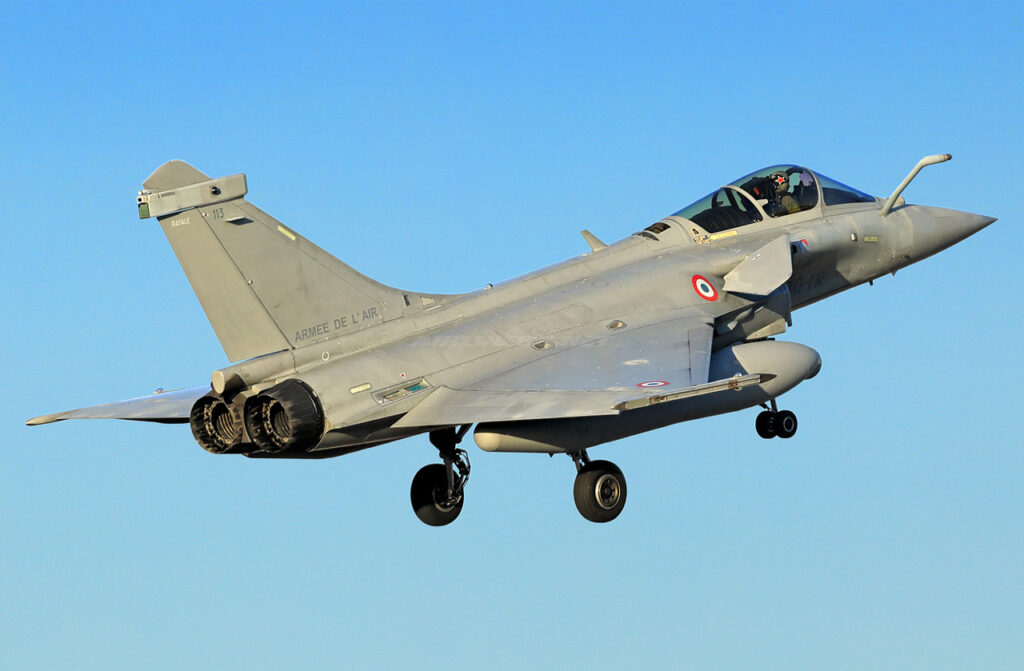
Technical analysis of Gripen, Typhoon and Rafale fighters, and their dependence on American components in European production.
The European multi-role fighters Saab Gripen, Typhoon Eurofighter and Dassault Rafale incorporate critical American components. These parts, like engines and electronic systems, underline the interdependence of global military production. This article details this dependence, the economic implications and the prospects for all-European production.
Saab Gripen: between American dependence and international assembly
The Saab JAS 39 Gripen, developed by Sweden, is the most dependent on foreign components of any European fighter. Its main engine, the F414-GE-39E, is designed by General Electric in the USA. Around 33% of Gripen’s components come from US suppliers, including critical systems such as the Honeywell Life Support System and electronic sensors.
In Sweden, only a small fraction of parts are produced locally. For example, the version exported to South Africa includes more South African components, while Brazilian models are assembled by Embraer. This modular approach favors international integration, but reinforces dependence on external partners.
Of the 300 Gripens produced, only 2 South African aircraft are currently operational, reflecting the procurement and maintenance challenges associated with a complex supply chain. This dependence raises strategic questions for Sweden in the event of geopolitical tensions, particularly with the USA.

Typhoon Eurofighter: a pan-European model, but not autonomous
The Typhoon Eurofighter, jointly developed by the UK, Germany, Italy and Spain, is based on a pan-European industrial base. Its engine, the Eurojet EJ200, is designed mainly by Rolls-Royce in the UK. However, this fighter uses critical components supplied by American companies such as Northrop Grumman, which provides inertial and satellite navigation systems, and Collins Aerospace, responsible for advanced display technologies.
Since entering service in 2003, some 600 units have been produced. Although the Typhoon stands out for its ability to pool European industrial efforts, around 20% of its systems are based on American technologies. These components include Lockheed Martin’s Sniper Advanced Targeting Pod, also used on non-European aircraft such as the F-16 and F/A-18 Hornet.
However, the interdependence of this program has enabled us to spread costs and reduce production times. By 2023, the military budget of the European countries involved in the Typhoon will be close to €40 billion. However, any disruption to US supply chains could slow future production and upgrades.
Dassault Rafale: an example of relative independence
The Dassault Rafale, produced in France, is Europe’s most technologically independent fighter. It is powered by the Snecma M88 engine, designed and produced exclusively by Safran. Unlike the Gripen and Typhoon, this engine is not dependent on any foreign supplier. However, certain key components, such as the Sniper Advanced Targeting Pod from Lockheed Martin or the hydraulic systems from The Lee Company, remind us that even the Rafale is not totally independent.
With over 260 units produced, the Rafale has enjoyed export success, notably to Egypt, India and the United Arab Emirates. To meet this demand, Safran has tripled production between 2015 and 2020, adopting Industry 4.0 practices. Despite this, political blockages, such as the British veto on exports to Argentina, show that European autonomy remains limited by geopolitical dynamics.
Prospects for all-European production
Creating a European 4.5+ generation fighter without American components is technically possible, but economically complex. European suppliers such as Safran, Rolls-Royce and Thales have the capacity to produce critical systems. However, development costs and time would be considerably higher.
Currently, around 20-40% of critical components for European fighter jets are sourced from the USA. This dependence is due to the US technological lead in areas such as sensors, navigation and propulsion.
100% European production would require massive investment in R&D. In 2023, the European Union has allocated around €1.5 billion to the development of defense capabilities via the European Defense Fund, an amount insufficient to compete with American defense budgets.

Strategic and economic consequences
European dependence on American components reflects global industrial interconnection, but also poses challenges in terms of strategic sovereignty. In the event of tensions between the United States and the European Union, access to critical parts could be restricted, slowing down the production and maintenance of existing fleets.
On the other hand, this interdependence fosters transatlantic cooperation, which is essential for maintaining a geopolitical balance in the face of powers such as China and Russia. The latter are also investing massively in their military industries. For example, Russia’s Sukhoi Su-57, faced with Western sanctions, has seen its production limited to a dozen units due to a lack of essential parts.
Europe’s Gripen, Typhoon and Rafale fighters illustrate both European technological excellence and the limits of complete autonomy. Although progress can be made to reduce dependence on American components, the transition to 100% European production requires enhanced cooperation, increased investment and a long-term strategic vision.
War Wings Daily is an independant magazine.